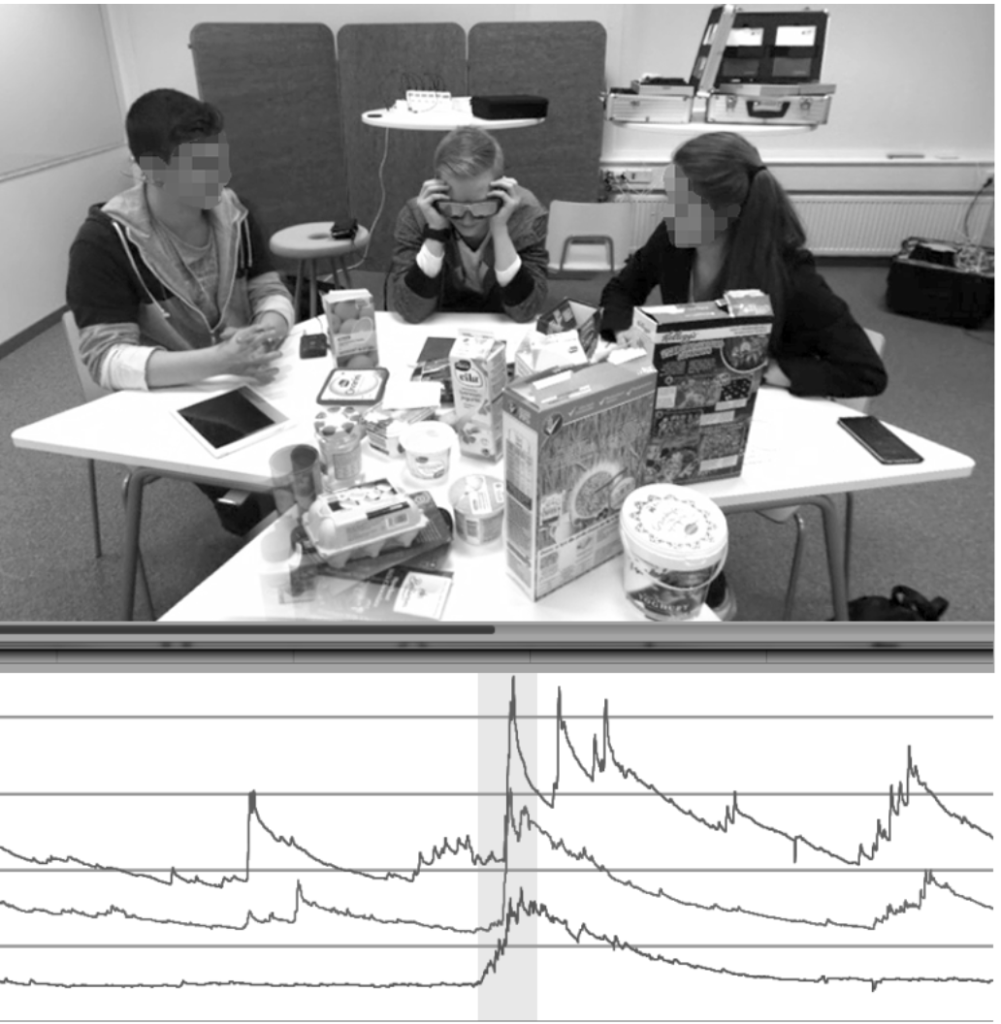
This article explores the dynamics of collaborative learning in the classroom from the perspective of the commonalities and interdependence in the degree of physiological activation from the sympathetic nervous system (i.e., sympathetic arousal) of group members. Using Empatica E4 wristbands, electrodermal activity—to derive arousal—was measured in 24 high school students working in groups of three (i.e., triads) during two runs of an advanced physics course. The participants met three times a week over six weeks for lessons of 75 min each. Most of the time (≈60–95% of the lesson) the triad members were at different arousal levels, and, when they were on the same level, it was mainly the low arousal (or deactivated) level. Less than 4% of the time were the triad members simultaneously in high arousal. Possible within-triad arousal contagion cases (71.3%) occurred mostly on a one-to-one basis and with a latency from within a few seconds up to 10 min, but usually within 1 min. This study supports the view that only small parts of group work are collaborative, as far as the synchronicity and coordination which collaboration presupposes. Although exploratory, results also illustrate the affordances of physiological measures to characterize collaborative processes.
Highlights
-
-
- •
-
-
-
- •
-
-
-
- •
-
-
-
- •
-
Pijeira-Díaz, H.J., Drachsler, H., Järvelä, S. & Kirschner, P.A. (2018). Sympathetic arousal commonalities and arousal contagion during collaborative learning: How attuned are triad members? Computers in Human Behavior, 2019 (Volume 91), 188-197

